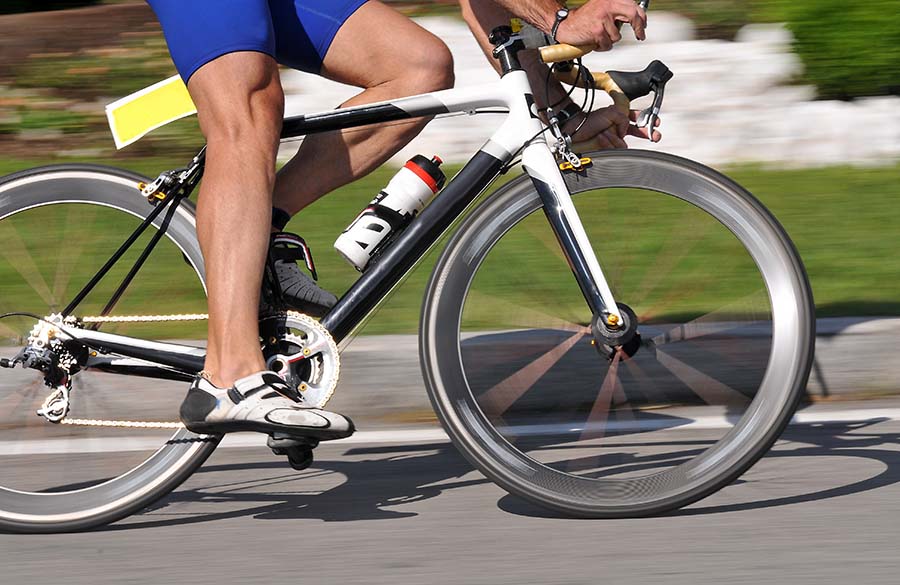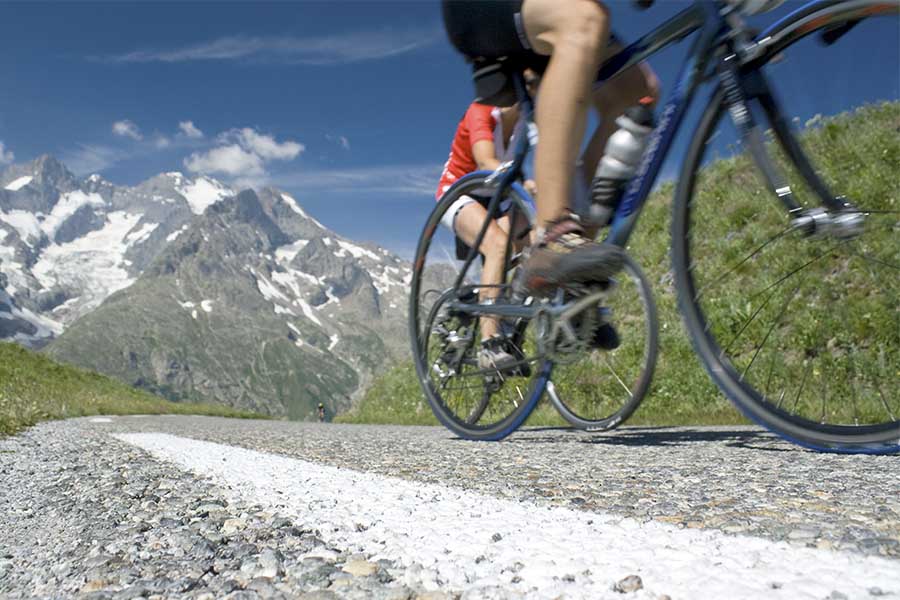Tips on Buying a Bike
How to successfully navigate the bicycle buying process
Picking the exact bike for your needs is complicated — whether the goal is to train for a triathlon, a road race, or to simply to get fit while enjoying fresh air and scenery. There are many factors to take into consideration: budget, fit, type of riding, quality of components, weight, etc. This article will supply you with many tips to help you in your hunt.
New or used?
Good bikes aren’t cheap. Cycling can be an extremely expensive sport, if you let it. After glancing at the prices of new road bikes, you might be tempted to immediately look in the used market to see if you can find a deal. While it’s true that you can save money upfront with a used bike, there are a number of things you need to take into consideration.

First of all, if you’re not an expert, you won’t know what to look for. Can you determine if a bike is in need of repair after having a short test ride? Do you know how to spot a problematic crack, bend, or misalignment? Can you identify the components on a bike and accurately determine their age and the price range they should be in? If you have an experienced friend who can help guide you through the process, you should definitely seek their advice.
One of the biggest concerns you should have about your bike is fit. Do the measurements of the bike properly match your body size (height, inseam, and arm length)? If you’re buying a used bike, you need to be aware of its size, and you need to find one that will fit you. If you find a used bike that fits, you should still budget extra money for a professional bike fitting after the purchase. Little details like the height of your seatpost and the length of your stem make a world of difference. It’s also strongly advisable to budget additional cash for a complete tuneup at a local bike shop.
One of the advantages of using a qualified local bike shop to purchase a new bike is that the fitting and your first tuneup are often included. Plus, you will know that the brakes, tires, drivetrain and cabling are all fresh and in top working order. The shop may also be able to put you in touch with other local cyclists for group rides and other community events.
The almighty budget
Budgeting for a bike purchase can be complex and difficult. When you get to know the various options that are available in your price range, it’s easy to upsell yourself on higher-end groupsets, frames, wheelsets, and more.
Here's a road groupset cheat sheet. The least expensive (yet still formidable) bikes will typically
have the entry-level groupsets (or elements of them mixed with other parts):
| Shimano | SRAM |
| Entry-level: Claris | Entry-level: Apex |
| Next up: Sora | Next up: Rival |
| Next up: Tiagra | Next up: Force |
| Next up: 105 | Best: Red |
| Next up: Ultegra | |
| Best: Dura-Ace |
The problem is that you shouldn’t spend everything you have on the bike alone. You’re also going to need pedals, a helmet, water bottles, lights, a saddle bag, a tire repair kit, tubes, a multitool, a pump, and more. It’s also a good idea to get at least one jersey and a pair of lycra bike shorts or a bib. You don’t just want to look the part, you want to be aerodynamic and as comfortable as possible when you ride.
As bike frames and the components they come with increase in quality, they typically get lighter in weight as the price goes up. It’s a good idea to add up the cost of all of the accessories you’re going to need, and then look at the available bike options with the remainder of your budget.
Cycling tech: now or later?
If you’re interested in sports technology, the most desirable piece of equipment for a bike is undoubtedly a power meter. Professional and enthusiast cyclists alike emphatically swear by power meters as the single most important tool for both training and racing. However, this creates a quandary for new cyclists: should you invest in a power meter now, or should you wait and possibly get one later?

Power meters are expensive, and finding one that’s compatible with your bike can be complicated. The good news is that the price of power meters has dropped significantly in the past few years. The bad news is that entry-level prices are still a bit steep, and a bike computer is also required to read and display the information from the power meter. Ouch.
Presently, you need to spend around $600 USD to outfit a bike with a basic power meter and bike computer. Obviously, for someone new to the sport, this is a sizable investment. However, it’s still something to strongly consider, especially if you’re training for an endurance race or a triathlon.
The longer you train with power, the better you will understand your capabilities and how you can improve on them. So, in this sense, it would be advantageous to train with a power meter from the very beginning. Getting one right away is the furthest thing from mandatory, but again, it’s something to strongly consider, if at all possible.
Learn more about training with a power meter in the SportTracks blog.
Ride before you decide
You may get enamored with a specific bike, based on your research and personal taste. While it’s perfectly fine to gravitate towards a certain model, it’s important to dedicate some time to test riding several bikes before you make a final decision. This is true even when buying a used bike. However appealing it may be on paper doesn’t mean that it will feel right when you actually get on and start pedaling.
If possible, visit several local bike shops to see what they have to offer in your price range. Be sure to wear clothing suitable for riding when you visit the shops. Ask about warranties, tuneups, and fittings while you’re there. This practice is incredibly useful to experience how the different bikes feel — and also to see how you like working with the various bike shops in your area.
Love your bike
Cycling is extremely technical. It takes a while to learn all of its jargon and vocabulary. Don’t let the complexity totally dissuade you from your gut instincts about a particular bike. At the end of the day, it greatly benefits you to have a connection with it. You should love the way it looks. It’s important that the bike speaks to you. You’ll be more likely to stick with it, and to get out there riding as often as you can. Besides, you just spent $600 on a power meter. You don't want to quit riding a week later. ;)
| Article written by Sam Mallery, Director of Marketing, Zone Five Software Inc. |
